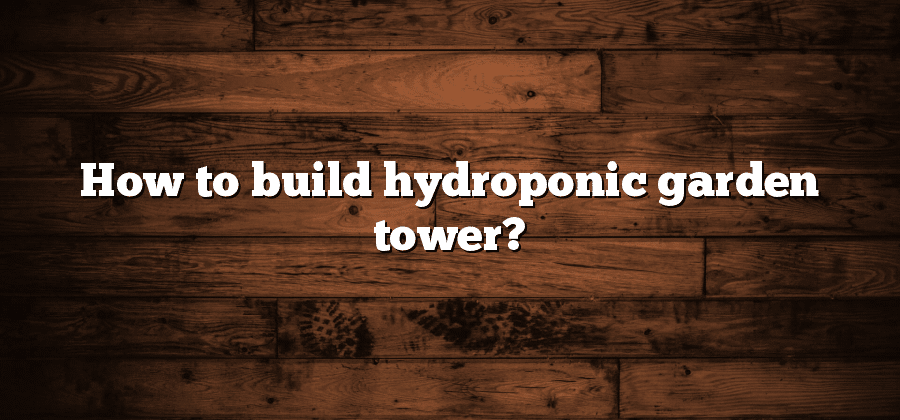Understanding the Basics of Hydroponics
Hydroponics is a method of growing plants without the use of soil. Instead, plants are cultivated in water that is enriched with nutrients and minerals. This innovative technique offers several advantages over traditional soil-based gardening, including faster growth rates, higher yields, and the ability to grow plants in areas with limited space or unfavorable soil conditions.
In hydroponics, plants receive the necessary nutrients directly through their roots in a water-based solution. This eliminates the need for them to search for nutrients in the soil, allowing them to focus their energy on growth and development. Additionally, the controlled environment of a hydroponic system allows for precise management of factors such as temperature, pH levels, and nutrient concentration, ensuring optimal conditions for plant growth. By understanding the basics of hydroponics, you can unlock the potential of this innovative gardening method and cultivate a thriving garden year-round.
Selecting the Right Materials for Your Hydroponic Garden Tower
When it comes to selecting the materials for your hydroponic garden tower, it is important to choose wisely and invest in high-quality components. The success of your hydroponic system greatly depends on the materials you use, as they play a crucial role in providing support, durability, and stability to your tower. Consider opting for food-grade plastic or PVC pipes, as they are lightweight, sturdy, and resistant to corrosion. Additionally, make sure to choose appropriate connectors and fittings that provide a secure and leak-free connection between the pipes. Investing in these materials will ensure the longevity and efficiency of your hydroponic garden tower.
Another important aspect of selecting the right materials for your hydroponic garden tower is choosing the appropriate growing medium. Some popular choices include coconut coir, perlite, or vermiculite. These growing mediums provide ample support, oxygenation, and water retention for the plant roots. Moreover, they do not contain any harmful pathogens or pests that may affect the plant’s health. Consider the specific needs of the plants you wish to grow and select the growing medium accordingly. Remember, using quality materials not only enhances the overall performance of your hydroponic system but also contributes to the healthy growth of your plants.
Designing an Efficient and Space-Saving Hydroponic System
When designing an efficient and space-saving hydroponic system, there are several key factors to consider. Firstly, it is important to choose the right type of system for your needs. There are various options available, such as nutrient film technique (NFT) systems, deep water culture (DWC) systems, and ebb and flow systems. Each system has its own advantages and disadvantages, so it is crucial to evaluate your specific requirements and goals before making a decision.
Additionally, maximizing space utilization is vital in designing an efficient hydroponic system. Vertical gardening, for example, allows for growing plants in multiple levels, thereby increasing the overall plant capacity within a limited area. Utilizing vertical space not only helps to conserve space but also allows for better air circulation and light penetration, enhancing the growth of plants. Furthermore, implementing techniques like trellising and training plants to grow vertically can help optimize space usage and prevent overcrowding. By carefully considering the type of system and implementing space-saving techniques, you can design an efficient hydroponic system that maximizes productivity and minimizes required space.
Preparing the Nutrient Solution for Your Hydroponic Garden Tower
To ensure the successful growth of your hydroponic garden tower, it is crucial to prepare the nutrient solution accurately. The nutrient solution serves as a substitute for soil and provides essential nutrients for your plants to thrive. In order to create the optimal solution, it is important to understand the specific nutrient requirements of your chosen plants.
Before preparing the nutrient solution, it is advisable to conduct a soil test or consult a horticulture expert for guidance. This will help you determine the optimal nutrient composition for your plants. Generally, a complete hydroponic nutrient solution consists of various macronutrients like nitrogen, phosphorus, and potassium, as well as micronutrients such as iron, zinc, and manganese. It is crucial to strike the right balance and ensure that your plants receive all the necessary nutrients for healthy growth. This can be achieved by using commercial hydroponic nutrient mixes or by customizing your own solution based on the requirements of your selected plants.
In conclusion, preparing the nutrient solution for your hydroponic garden tower requires careful consideration of the specific needs of your plants. By providing the correct balance of macronutrients and micronutrients, you can ensure a healthy and thriving hydroponic garden.
Assembling and Installing the Hydroponic Garden Tower Structure
To assemble and install the hydroponic garden tower structure, start by laying out all the components and making sure you have everything you need. This includes the tower base, the tower sections, the planting cups, and the irrigation system. Read the instructions carefully to ensure you understand how the pieces fit together.
Next, begin by attaching the tower sections to the base. Align the slots on the sections with the connectors on the base and secure them firmly in place. Once the sections are securely attached, insert the planting cups into the designated slots. These cups will hold your plants in place as they grow. Lastly, connect the irrigation system. This typically involves attaching tubes or pipes to the base and running them through the tower sections, allowing water to be evenly distributed to each planting cup. Ensure all connections are tight and secure before proceeding.
By following these steps, you will be well on your way to assembling and installing your hydroponic garden tower structure.






